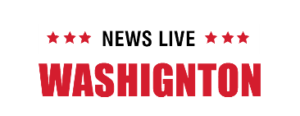At prestigious universities, students are concerned about their mental health. To combat this, the university should provide more quiet spaces for students.
Every presidential address and reality show has an interesting approach to mental health awareness. The song told students about the various resources available, from wellness workshops to short-term and long-term counseling. I’d be surprised if you didn’t walk away knowing the Wellness Exchange phone number by heart.
But that appointment was a few months ago, and NYU’s physical and mental health support seems to be a bunch of empty promises rather than a lot of real support. If NYU wants to increase mental health awareness and support, it needs to provide more quiet spaces for students across campus.
NYU has gone to great lengths to create study spaces for students—we have Bobst Library classrooms, quiet lounges, reservable spaces in the Kimmel Center for University Life, and study spaces across campus. If you’re lucky, you might get some alone time in Tisch Hall’s third-floor lounge or Silver Center’s second-floor lounge, but these places are hardly quiet. While these rooms are great for focusing on work, the office, which is often fully booked a week in advance, doesn’t help. Study spaces are stressful, and your limited quiet hours don’t have to be confined to small rooms with desks. NYU should create more special places for students to enjoy quiet time.
The reason we need quiet spaces—not just study spaces—is for students’ mental health. Students tend to get more burned out the further into the semester we get, and a little peace and quiet can help alleviate that. In accordance with The Common Sense Study., that collected information from college campuses across the country, more than 60% of college students surveyed during the 2020-21 academic year met criteria for at least one mental health problem. Another national study showed that nearly three-quarters of students reported moderate to severe psychological distress.
With this in mind, several universities, both in urban areas and beyond, have created quiet spaces for students.
At Stevens Institute of Technology in Hoboken, New Jersey, students, faculty and staff have access to a 24-hour quiet space. The driving force behind the development of this direction was the students who are members of the Student Government Association, in particular, many representatives of religious organizations. One of the key points about this space is that it is there “not meant for sleeping, playing, doing homework, or eating.” Instead, it should be used for quiet reflection, mindfulness and reflection, all of which students at prestigious universities in a city that is constantly on the move need.
Ohio State University’s Electrical Science Laboratory created a Quiet room 2017 the following attack on students last year. This expansion of health options demonstrates the potential of preventive measures. In addition to other venues, ESL administrators looked to Ohio Union’s meditation room for best practices in organizing, designing, and offering a supportive environment for students.
NYU doesn’t have to wait for something like an attack to implement quiet spaces. The university needs to normalize quiet spaces as a wellness practice, something as important as eating healthy in the dining halls and enriching the curriculum. Since NYU has an unconventional campus, it makes sense that there aren’t many quiet spaces for students. However, if the university wants to relieve student stress and deal with it the ongoing mental health crisis across the countrygiving students access to quiet spaces on campus would be a step in the right direction.
The Opinion section of WSN aims to publish ideas worthy of discussion. The opinions presented in the Opinion section are solely those of the writer.
Contact Molly Koch at [email protected]







